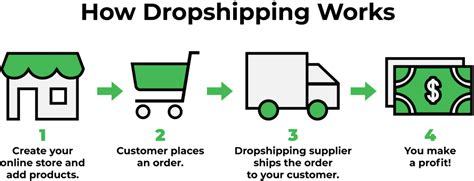How To Do Dropshipping: A Complete Beginner's Guide
Dropshipping is a retail fulfillment method where a store doesn't keep the products it sells in stock. Instead, when a store sells a product, it purchases the item from a third party (a wholesaler or manufacturer) and has it shipped directly to the customer. This eliminates the need for the store owner to handle inventory, packaging, and shipping. Sounds appealing? Let's dive into how to do dropshipping successfully.
Understanding the Dropshipping Business Model
Before jumping in, it's crucial to understand the core mechanics. You act as the middleman, connecting customers with suppliers. Your role focuses on marketing, sales, and customer service. The supplier handles the rest. This low-overhead model makes it attractive for entrepreneurs with limited capital. However, success requires a strong understanding of marketing, customer service, and supplier management.
Advantages of Dropshipping:
- Low Startup Costs: Minimal upfront investment is needed, making it accessible to beginners.
- Wide Selection of Products: You're not limited by storage space; you can offer a vast range of products.
- Easy to Set Up: Getting started is relatively straightforward, with numerous platforms available.
- Location Independence: Manage your business from anywhere with an internet connection.
Disadvantages of Dropshipping:
- Low Profit Margins: Competition is fierce, leading to tight profit margins.
- Inventory Issues: You're reliant on your suppliers, so stockouts and shipping delays are possible.
- Shipping Complications: Managing shipping from multiple suppliers can be complex.
- Customer Service Challenges: Addressing customer issues related to shipping and product quality requires careful handling.
Setting Up Your Dropshipping Business: A Step-by-Step Guide
1. Niche Selection: Choosing a profitable niche is crucial. Research markets with high demand and low competition. Consider your interests and expertise. Tools like Google Trends can help you identify trending products. Don't just jump on the latest fad; choose something sustainable.
2. Platform Selection: Several e-commerce platforms are ideal for dropshipping:
- Shopify: A popular and versatile platform with extensive app integrations.
- WooCommerce: A WordPress plugin offering customization and flexibility.
- eBay: A massive marketplace with a built-in customer base.
3. Supplier Sourcing: Finding reliable suppliers is paramount. Look for suppliers with:
- Fast shipping times: Minimize customer wait times.
- High-quality products: Maintain customer satisfaction.
- Excellent customer service: Streamline issue resolution.
- Competitive pricing: Maximize your profit margins.
4. Product Listing & Optimization: Create compelling product listings with high-quality images and detailed descriptions. Use relevant keywords to improve search engine optimization (SEO). This is where you'll leverage your knowledge of your niche.
5. Marketing & Sales: Drive traffic to your store through various channels:
- Social Media Marketing: Engage your target audience on platforms like Instagram, Facebook, and TikTok.
- Paid Advertising (PPC): Utilize Google Ads or social media ads to target specific demographics.
- Content Marketing: Create valuable content (blog posts, videos) to attract organic traffic.
- Email Marketing: Build an email list to nurture leads and promote new products.
6. Order Fulfillment & Customer Service: Process orders promptly and efficiently. Provide excellent customer support to address any questions or concerns.
Scaling Your Dropshipping Business
Once you've established a solid foundation, focus on scaling your operations. This involves:
- Expanding your product catalog: Offer a wider range of products to cater to diverse customer needs.
- Improving your marketing strategies: Experiment with different marketing channels and refine your approach.
- Automating processes: Utilize tools and software to automate order fulfillment and customer service.
- Building a strong brand: Develop a unique brand identity to differentiate yourself from the competition.
Conclusion: Success in Dropshipping Requires Dedication
Dropshipping offers a fantastic opportunity to start an online business with minimal capital. However, success isn't guaranteed. It requires dedication, consistent effort, and a keen understanding of marketing, sales, and customer service. By following these steps and continuously learning and adapting, you can significantly increase your chances of building a thriving dropshipping business. Remember, patience and persistence are key!
